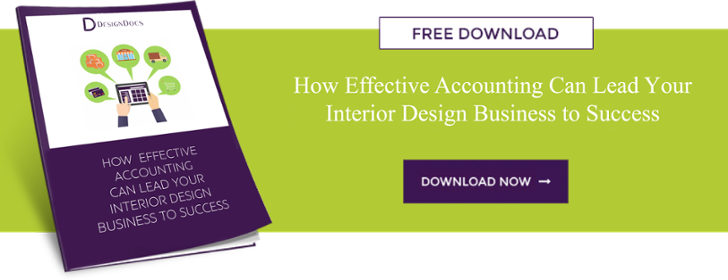When a new project comes your firm's way, it’s easy to get swept up in the creative potential and speculate about the prospective client. The inquiry may have come from word of mouth or a referral from a previous client. Perhaps they found you via Google search, a paid ad, or your social media platforms that you and your team have worked hard to build.
It's exciting to hear that your firm is talked about positively and being discovered. However, it's imperative that before saying "yes please!", you first ask critical questions of both your potential new client and your business. Qualifying the lead thoroughly at this stage will ensure the project is a good fit by determining whether it aligns with your firm’s direction and goals.
So what specific things should you think about before getting your new client to sign on the dotted line? Here is our summary of five things to consider when taking on a new project.
1. BE CLEAR ABOUT BUDGET
A great way to sort out the best possible projects is to be extremely clear about the budget. Though it's not proper business etiquette to ask your potential client about their budget straight away, it's essential to establish it early on. Taking on a client who can't work within your firm's minimum budget sets up your team for unnecessary stress and pressure.
Accepting a client that doesn’t meet budget requirements will likely hinder the creative design process as you look for ways to cut costs, offer cheaper alternatives, or work outside of your usual project process flow–which could end up having disastrous consequences.
2. SET CLEAR TIMELINE EXPECTATIONS
With current logistical strains and extended lead times, it's crucial to consider their impact on your new project’s timeframe. Make sure to discuss with potential clients in advance so they’re fully aware of time constraints outside your firm’s control. This will help set realistic expectations before the project commences so that if the completion date doesn't suit, at least it's been discovered early on in the conversation.
If the timeline is agreeable for both you and the client, you've successfully safeguarded your firm from difficult discussions down the line in the event of delays or holdups.
3. MAKE SURE YOU HAVE THE CAPABILITY
Is your team equipped and ready for a new project? If your firm is even slightly understaffed, it can lead to tired designers with less brainpower for creativity. One way to ensure your team is performing to the best of their ability is by investing in robust software that will take the pressure off.
DesignDocs' all-in-one project management and accounting software will give your team more time to be creative. It streamlines processes and automates essential workflows, giving your firm the ability to take on new projects without added stress. Built-in reports simplify managing project budgets, while time tracking allows for accurate staff time allocation to the task at hand.
4. UNDERSTAND THEIR PREVIOUS EXPERIENCE
Has your new client worked with a designer before? Their experience working with a previous interior design firm may shape how they work with you and your team.
Whether or not your prospective client has worked with a designer before doesn't directly determine the new project's success. However, this knowledge can give you some context and ascertain their working style, their familiarity with the different stages of a project, and what they consider their role to be. Do they want to take the reins or will they trust your firm's creativity? Be sure to consider how their work style will align with the way your firm operates.
5. MAKE SURE THE PROJECT ALIGNS WITH YOUR FIRM’S GOAL
Does your firm have its sights set on any particular long-term and short-term goals? Make sure to consider whether potential new projects align with the direction in which your firm is heading. For example, if your goal is to move toward full-home projects, you'll need to start saying no to smaller projects that prevent your team from accepting the larger ones when they come along.
Thinking strategically about where you are now versus where you want to be is crucial in helping your firm scale up. Considering all the facts, including the size and type of new project before taking it on, will ensure you're keeping your firm on a trajectory to growth and longevity.




